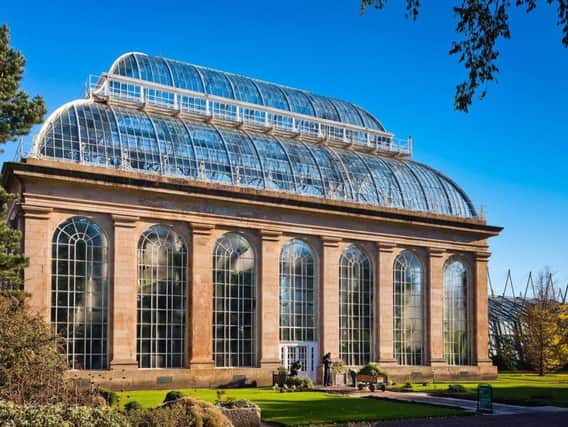Edinburgh’s Royal Botanic Garden in bid to buy Chilean rainforest
This article contains affiliate links. We may earn a small commission on items purchased through this article, but that does not affect our editorial judgement.


The Royal Botanic Garden Edinburgh (RBGE) is working with the charity Rainforest Concern to raise up to £2.6 million for the purchase.
The remote 2000 hectare (5000 acre) forest - around the size of Stirling - is in southern Chile, flanking the western slopes of the Andes.
Advertisement
Hide AdAdvertisement
Hide AdIt contains conifers believed to be more than 5000 years old, making them among the oldest living things on Earth.
Home to pumas, the world’s smallest deer, the pudu, and a tiny native marsupial known as the monito del monte or “little monkey of the mountains”, the land was recently put up for sale by its Chilean owner.
Buying the forest would prevent a possible wind farm development and help save the ancient trees and wildlife from possible extinction.
The property would be purchased by Rainforest Concern with money being raised through an appeal to philanthropists, and managed in partnership with the RBGE.
Advertisement
Hide AdAdvertisement
Hide AdPart of the plan involves a research station for RBGE botanists to study the remarkable Fitzroya cupressoides trees that could hold vital information about climate change because of their age.
Scientists would also use samples to help establish a genetically diverse back-up population in Scotland.
Martin Gardner, co-ordinator of the International Conifer Conservation Programme (ICCP) at RBGE, said: “We are working in close collaboration with Rainforest Concern to purchase this piece of forest.
“But rainforests don’t come cheap - something like £1300 per hectare - and we’re working together to try and raise the money.
Advertisement
Hide AdAdvertisement
Hide Ad“Time is not on our side but, hopefully within the next year or 18 months, we can raise enough to start the purchase process.
“One of our competitors wants to establish a small wind farm which would be catastrophic for that forest.”
Chilean forests represent nearly one third of the world’s surviving temperate rainforests.
Around 90% of the plant species in the southern forests occur nowhere else in the world. They include the ancient Fitzroyas, which have been exploited for their timber for centuries.
Advertisement
Hide AdAdvertisement
Hide AdOfficially listed as Endangered, it is now illegal to fell the 70m tall giants, but the habitat itself is not protected and trees thousands of years old are still being killed.
Mr Gardner said: “We need forests like these for our very survival. They are like libraries because, by coring them, we can look at the past -- when there were droughts and when there were fires, that whole story is told. We can look at the growth patterns and what we see will help us to look in to the future.
“That research helps us to understand more about climate change, so these trees are immensely important. Purchasing the forest and having a field station will give us an opportunity to do long term research, which is absolutely vital.”
Local people will also benefit from the purchase as they will be employed to help to look after the forest.
Advertisement
Hide AdAdvertisement
Hide AdOliver Whaley, Chairman of Rainforest Concern and a research associate at RBGE and Kew Gardens in London, said that the link with RBGE -- a “world renowned research institution” -- was crucial.
He added: “This forest is probably the oldest in the whole of the Andes, which makes it very special.
“When the Ice Age retreated, between 6000 and 10,000 years ago, it became forest. Some of the trees have probably been there close to 6000 years. They not only hold an incredible record, but have shown an amazing capacity to survive climate change.
“If we are to address climate change, part of the solution is to save these forests.
Advertisement
Hide AdAdvertisement
Hide Ad“Edinburgh is recognised worldwide for its conifer research but it is also the perfect climate for southern Chile.
“That has allowed them to build an incredible connection to Chile and to have the most important collection of Chilean plants outside that country.
“In the worst case scenario, if forests die back in their home distribution, ex-situ conservation allows us to conserve the genetic diversity and restore that like a living back up.”
Join our Facebook group Our Edinburgh to share images and news from and around the Capital
